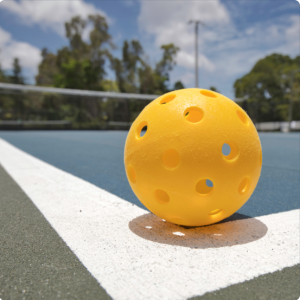
As an orthopedic surgeon, my primary concern is the health and well-being of my patients. In recent years, I have noticed a surge in the number of Pickleball-related injuries among both seasoned players and beginners. Pickleball, a popular racket sport that combines elements of tennis, badminton, and table tennis, has gained immense popularity across all age groups. While it is an enjoyable and low-impact sport, the risk of injuries cannot be ignored.
Understanding Pickleball Injuries
Pickleball injuries can vary from mild sprains and strains to more severe fractures and dislocations. The most commonly affected areas are the shoulders, elbows, wrists, knees, and ankles. Due to the fast-paced nature of the game and the quick lateral movements involved, players may experience overuse injuries and sudden twists that lead to acute injuries.
Common Pickleball Injuries
- Shoulder Injuries
- Rotator cuff strains and tears are prevalent among Pickleball players, often caused by repetitive overhead motions during serves and smashes.
- Elbow Injuries
- Tennis elbow, or lateral epicondylitis, can develop due to the repetitive gripping and swinging of the paddle.
- Wrist Injuries
- Carpal tunnel syndrome and wrist sprains can result from constant paddling movements.
- Knee Injuries
- Meniscal tears and ligament strains may occur due to quick lateral movements and sudden stops.
- Ankle Injuries
- Sprained ankles are common, especially when players change direction abruptly or land awkwardly.
Prevention is Key
While injuries may seem inevitable in any sport, preventive measures can significantly reduce their occurrence in Pickleball:
1. Warm-up and Stretching:
Before stepping onto the court, players should perform a thorough warm-up and gentle stretching exercises to prepare their muscles and joints for the game’s demands.
2. Proper Technique:
Learning the correct techniques for strokes, serves, and footwork can minimize the risk of overuse injuries and improve overall performance.
3. Footwear:
Investing in good-quality, supportive court shoes can provide stability and reduce the chances of ankle sprains.
4. Rest and Recovery:
Adequate rest between matches and proper recovery strategies can help prevent overuse injuries and ensure optimal performance.
5. Listening to Your Body:
It is essential for players to listen to their bodies and recognize any signs of discomfort or pain. Ignoring early warning signs can lead to more severe injuries and prolonged recovery periods. If any pain or discomfort persists, players should seek medical attention promptly.
Returning to Play After an Injury
For players recovering from a Pickleball injury, it is crucial to follow the orthopedic surgeon’s guidance and engage in a structured rehabilitation program. Rushing back to the court prematurely can exacerbate the injury and lead to long-term consequences.
From the Desk of of Dr. Grossfeld
In conclusion, Pickleball is an enjoyable and social sport that offers numerous health benefits. However, like any physical activity, it comes with inherent injury risks. By understanding these risks and implementing preventive measures, players can continue to enjoy the sport safely and reduce the likelihood of seeking orthopedic care due to Pickleball-related injuries. As an orthopedic surgeon, my goal is to ensure that all Pickleball enthusiasts can enjoy the game while prioritizing their musculoskeletal health.
If you or someone you love has suffered a sports injury or pickleball injury in the Louisville, Kentucky-area, board certified sports medicine physician Dr. Stacie Grossfeld at Orthopaedic Specialists PLLC can help. Orthopaedic Specialists PLLC is accepting new patients, and same day appointments are available. For additional information or to schedule an appointment, please contact Orthopaedic Specialists PLLC today at 502-212-2663.

Recent Comments